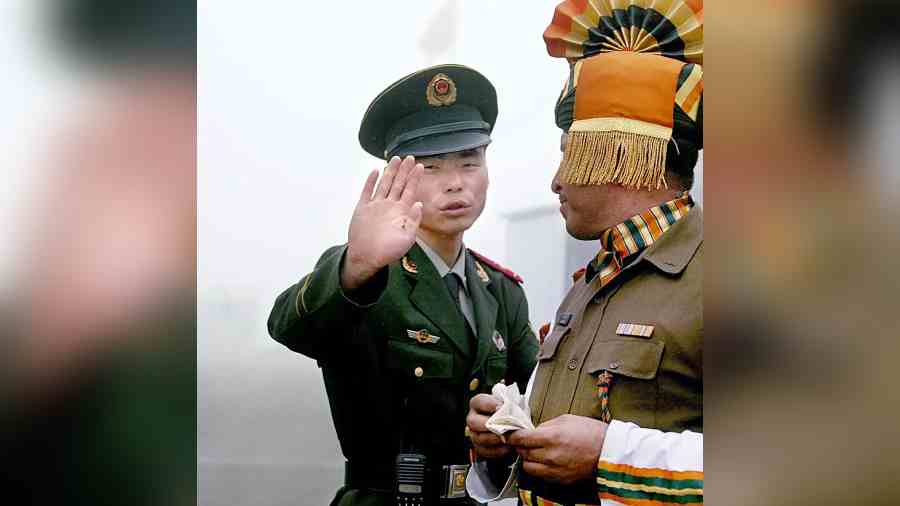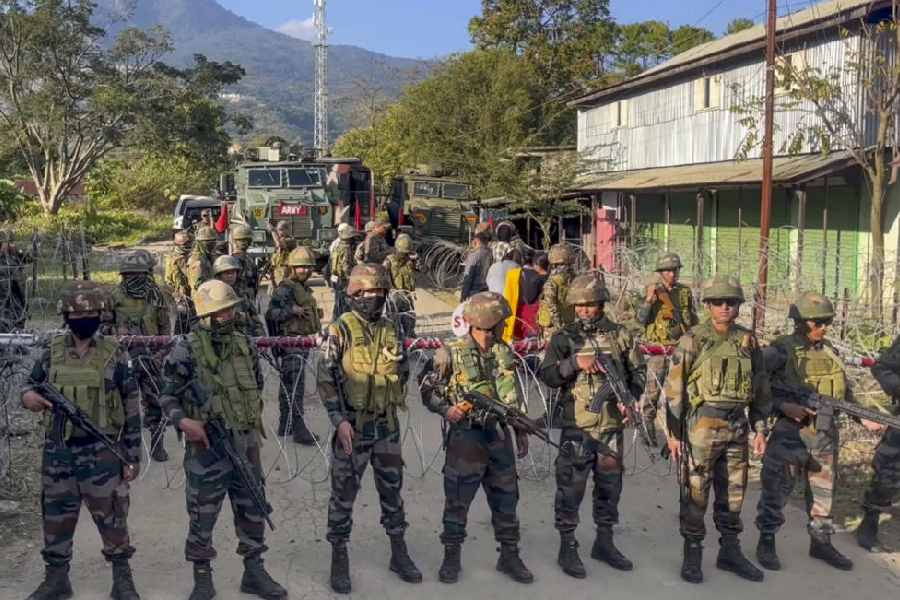The year was 1986. India had started sending an annual patrol during the summers to an area called Sumdorong Chu valley on the border between Arunachal Pradesh and Tibet only three years back. When the Intelligence Bureau team reached there in July 1986, it found the Chinese already present and refusing to budge. The valley, known to the Chinese as Wangdong, is close to the Thagla ridge where the 1962 border war with China began. In Arunachal Pradesh, both India and China agree to the McMahon Line as the line of actual control, although Beijing doesn’t accept its validity as an international boundary. While Indians believe in the principle which this line is supposed to follow — the line must pass through the highest watershed — the Chinese stick to the line as was drawn by McMahon on the map in 1914.
Henry McMahon was the British foreign secretary of colonial India who had drawn this line with a thick nib in red ink on an eight miles to the inch map during a tripartite conference with Tibet and China. The area was poorly surveyed which meant that the line on the original map did not follow its own principle and the thick nib spanned areas as wide as five kilometres in some places. These discrepancies have created certain areas of dispute between India and China, Sumdorong Chu being one such area. Failing to get a sensible response from Beijing diplomatically, the then Congress government ordered the army to move troops to the region and occupy many dominating heights. Indian soldiers set up posts a few metres away from the Chinese posts. The eyeball-to-eyeball confrontation was resolved in May 1987, but it took six more years to restore, in broad terms, the status quo in the area.
Among the important areas occupied on the border in 1986, and never vacated since, was a place called Yangtse ridge. This was the site of a violent clash between the Chinese and Indian soldiers on December 9 which has grabbed headlines in recent days. It is not the first time that China’s People’s Liberation Army has sent its troops to Yangtse ridge; this is an annual ritual, before and after the winters. But this time, it was not the usual patrol of 50 soldiers during daytime. The PLA sent a much bigger force of 300 soldiers, that too at 3 am in the morning, signalling a more ambitious design to at least disrupt, if not dislodge, Indian presence at the ridge. It was made possible by a blacktop road and an army camp, only 150 metres short of the ridge, constructed by the Chinese this year.
Located at an altitude of around 15,000 feet, about 30 km to the north of Tawang, is the Yangtse plateau, a flat ground or bowl surrounded by hills on its northern, western, and eastern sides. The northern hills lie in China while on the south-west side lies Mago, which is the entrance to the plateau. Towards the north-western shoulder of the plateau at an altitude of around 17,000 feet is the Yangtse ridge that is only approachable from the plateau. The ridge provides an unhindered view of the entire Tawang valley and the Bum la area on the Indian side, but equally offers a clear view of the Nagdoh bowl of China. Any significant Chinese military operations against Tawang would have to use Nagdoh, thus making the ridge important for the PLA.
If the Yangtse ridge is militarily critical, Tawang is politically important for China, particularly because of its domestic troubles in Tibet and the questions about the succession of the next Dalai Lama. Tawang has the 341-year-old Galden Namgey Lhatse monastery, the second biggest after the Potala Palace in Lhasa, the Tibetan capital. The sixth Dalai Lama was born in Tawang in the 17th century. Even when J.P. Mills established the British Indian administration in 1944 in the NorthEast Frontier Agency, the administrative precursor to Arunachal Pradesh, he excluded the Tawang tract. It continued to be administered by the Lhasa-appointed head lama and the present Dalai Lama made his written claim to Tawang to newly-independent India in 1947. In 2003 while touring Tawang, he refused to give a direct answer, saying that Arunachal Pradesh was actually a part of Tibet. He has modified his stance since.
The Indian administration reached Tawang on February 16, 1951 but the Chinese now claim that India did it surreptitiously when they were busy fighting the US forces in the Korean war. It is more likely that Beijing only formulated its claims after Communist China took control of Lhasa and studied historical Tibetan documents. From 1985, the Chinese have started claiming that in any boundary settlement, India will have to concede Tawang. Dai Bingguo, who served as Beijing’s Special Representative for border talks with India between 2003 and 2013, said in 2017 that “...[t] he disputed territory in the eastern sector of the China-India boundary, including Tawang, is inalienable from China’s Tibet in terms of cultural background and administrative jurisdiction.” This is despite the 2005 bilateral agreement which states that “in reaching a boundary settlement, the two sides shall safeguard due interests of their settled population in the border areas.”
Even if Tawang is politically important, the recent clash at Yangtse ridge is more worrisome when seen in the backdrop of the ongoing military stand-off in Ladakh. After 31 months, there has been no disengagement (moving soldiers a few kilometres apart from an eyeball-to-eyeball situation) in Depsang and Demchok, the Chinese have ruled out the next step of de-escalation (removing soldiers by 50 to 100 km away to semi-permanent bases) in areas where disengagement has taken place, buffer zones deny Indians their erstwhile patrolling rights, and more than 50,000 additional soldiers from each side remain deployed there. The lack of outcome in the latest round of talks between senior military commanders on Tuesday has underlined India’s disadvantage. Even the overture by Prime Minister Narendra Modi to the Chinese president, Xi Jinping, during the official banquet of G20 summit at Bali has failed to yield results.
If the PLA can attempt a military action at a well-held place like Yangtse ridge, no place on the LAC is now safe from its designs. While the border agreements of the 1990s helped by providing a formal structure, peace on the disputed border was practically maintained by deterrence. The Yangtse clash shows that this deterrence — a function of ability and credibility — has completely broken down. Having seen the Modi government in action at Chumar, Doklam and Ladakh, Beijing now seems to see India as a relatively weak power, which can’t match its rhetoric with hard actions.
If the increasing asymmetry of power with China is structural, the Modi government’s attempts to underplay the border crisis have only emboldened Beijing. Such is the disconnect with reality here that 69.3% Indians, as per a Stimson Center survey, believe that India can militarily defeat China. China remains India’s top trading partner with trade reaching record highs, while diplomatic engagements continue normally. Even the long-held practice of undertaking a local quid pro quo military operation into Chinese territory, to bargain effectively at the negotiating table, has been castoff. The internal military balancing has only led to a defensive deployment on the border while closer external partnerships with the United States of America or in the Quad have failed to deter Beijing.
Even as the Chinese threat looms large on the border, the Indian political leadership is obsessed with Pakistan. This dissonance will have dangerous consequences because Beijing’s message to India is loud and clear. It can’t be wished away by denial, distraction, or a deafening silence from Modi.
Sushant Singh is a Senior Fellow at Centre for Policy Research, New Delhi











